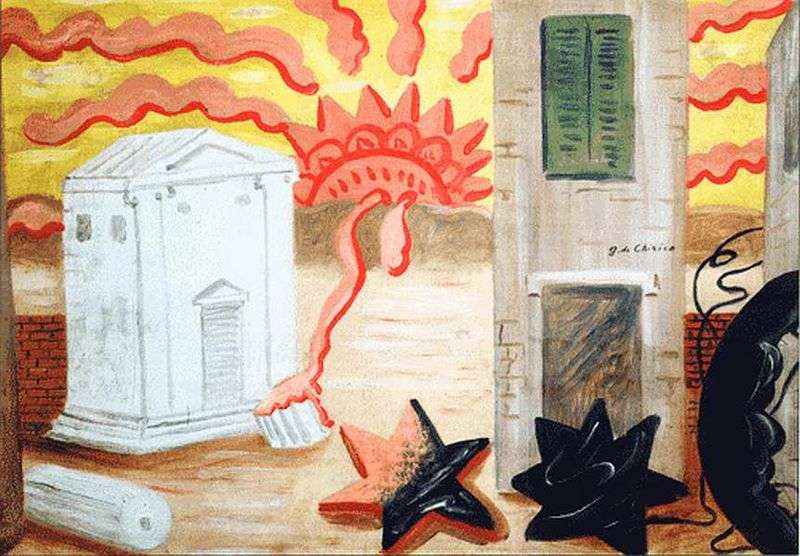
Giorgio de Chirico, an Italian artist and art theorist, rightfully considered one of the forerunners of surrealism in contemporary painting, in the second half of his life moved away from innovative ideas, seeking inspiration in the images of classical art.
After success at the Paris exhibition in 1925, he increasingly began to borrow stories for his paintings from Greco-Roman mythology. Ancient Mediterranean civilization was native to the master, who was born and spent his childhood and adolescence in Greece, and his youth and mature years in Italy.
The rising sun is a symbolic image of the ancient world, the time of the birth of European culture. In the painting with this name, de Chirico shows how the sun caresses the golden sky and sandy beach with its rays like human hands, touching fragments of ancient architecture lying at the foot of a small, stylized in the ancient spirit temple, topped with a triangular pediment that rests on the half-columns of the Ionian orders. In the vicinity are visible huge, thrown to the shore of the starfish.
The sea is not visible, but before the viewer – its inhabitants. The ancient civilization was a seaside, all its major centers did not move away from the coast beyond 60 km. Opposite the ancient temple there is a conditionally depicted, but recognizable, typical Italian house with shutters, perhaps symbolizing the continuity of cultures.
Although the painter also became interested in the classical heritage, his artistic language and figurative structure were still closely related to the previous period of creativity. The whole picture is a set of signs seen as if in a dream or a vision. It is obvious, however, that it arises in the artist’s imagination not spontaneously, but is the fruit of meditations and meditations, clothed in the form of random fantasy.
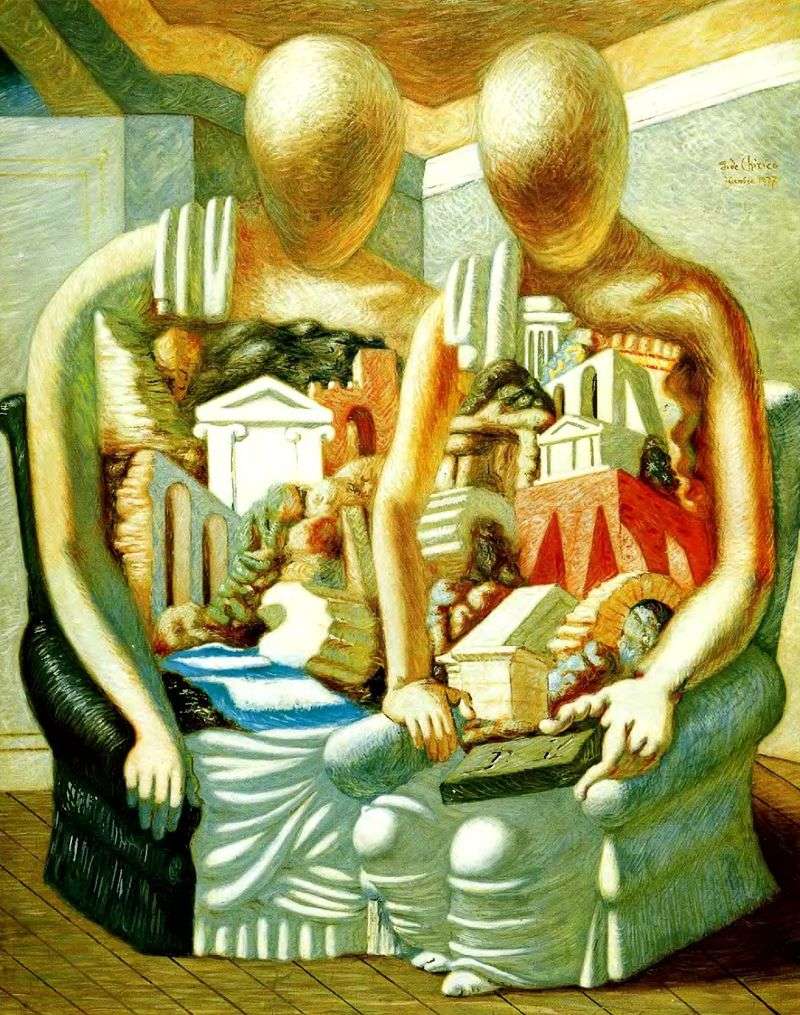 Archaeological cycle by Giorgio de Chirico
Archaeological cycle by Giorgio de Chirico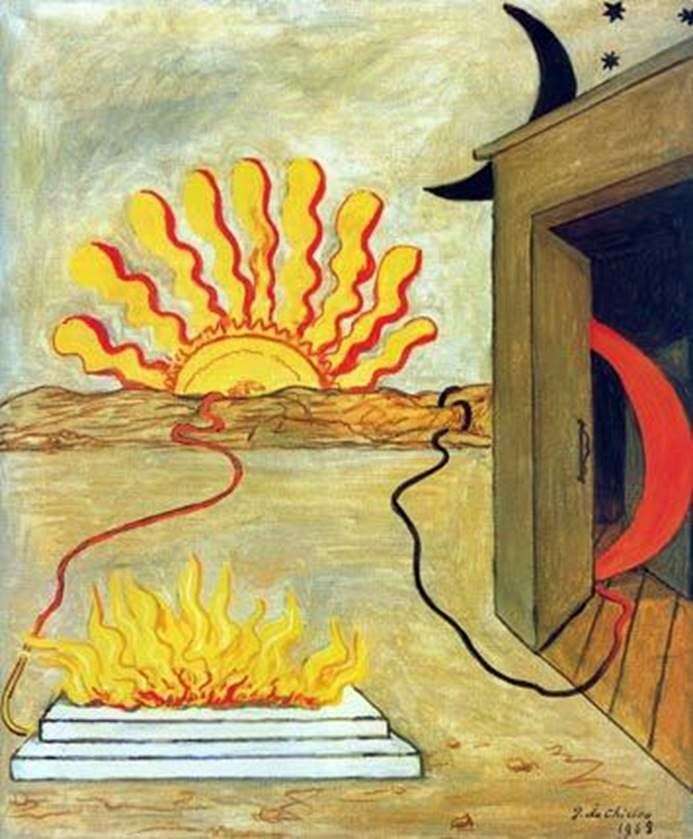 Sacrifice to the Sun by Giorgio de Chirico
Sacrifice to the Sun by Giorgio de Chirico The great metaphysician by Giorgio de Chirico
The great metaphysician by Giorgio de Chirico Italian squares in the paintings by Giorgio de Chirico
Italian squares in the paintings by Giorgio de Chirico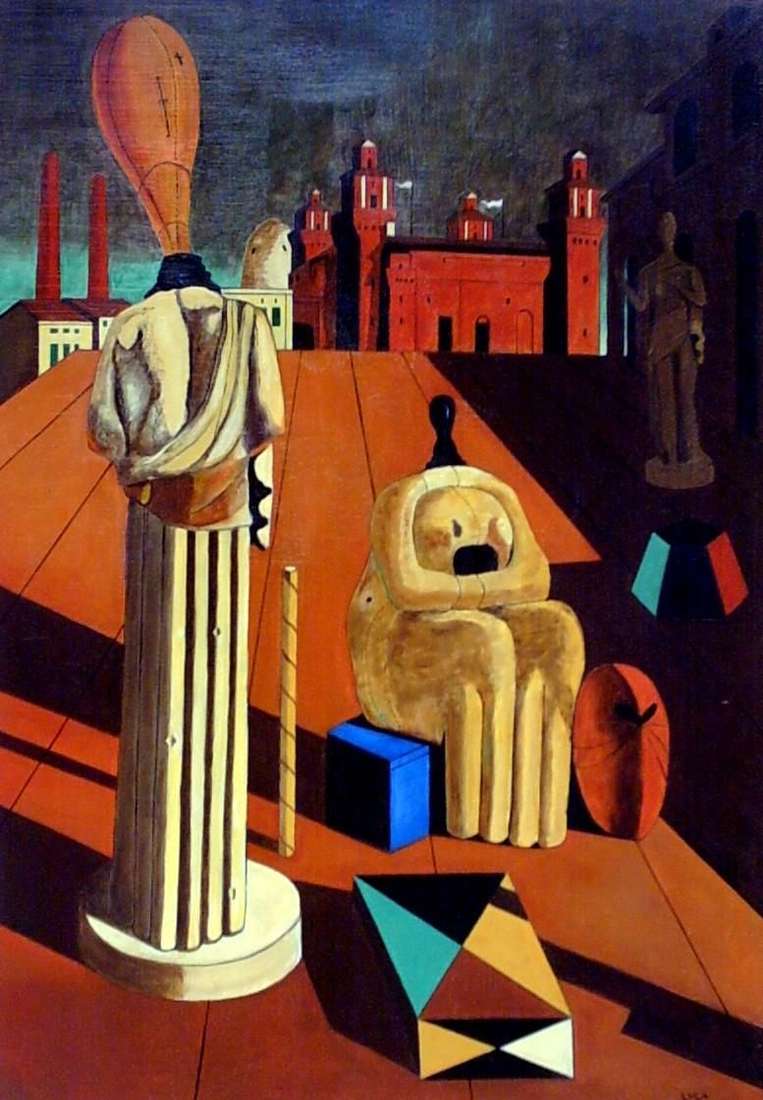 Destruction of the Muses by Giorgio de Chirico
Destruction of the Muses by Giorgio de Chirico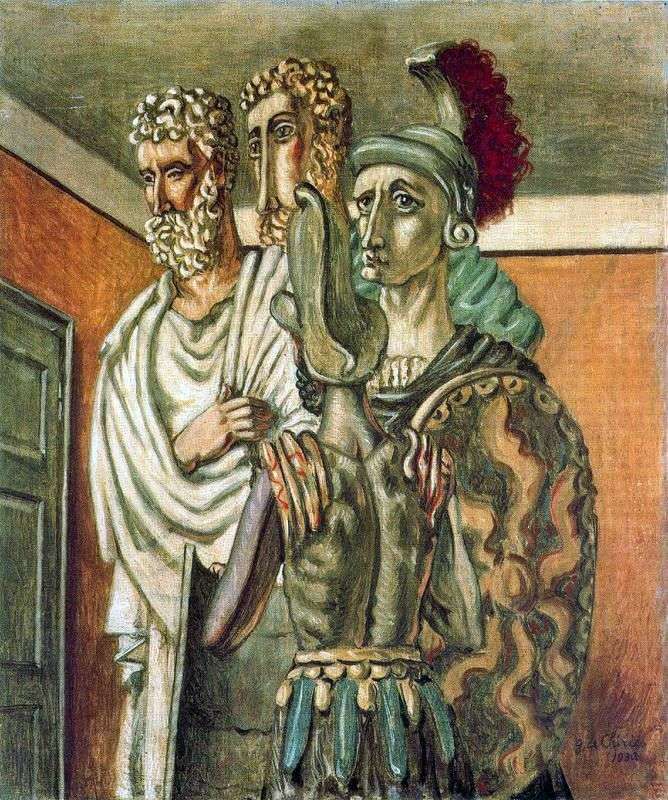 Classic figures in the room by Giorgio de Chirico
Classic figures in the room by Giorgio de Chirico Tower by Giorgio de Chirico
Tower by Giorgio de Chirico The Prodigal Son by Giorgio de Chirico
The Prodigal Son by Giorgio de Chirico